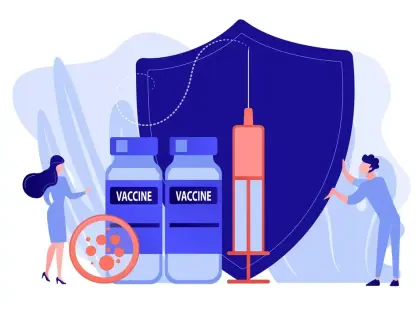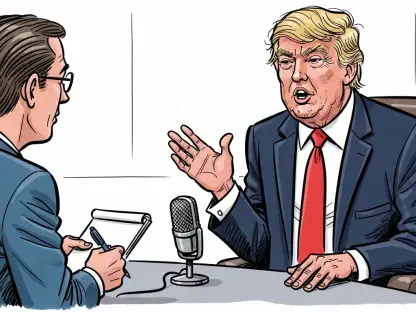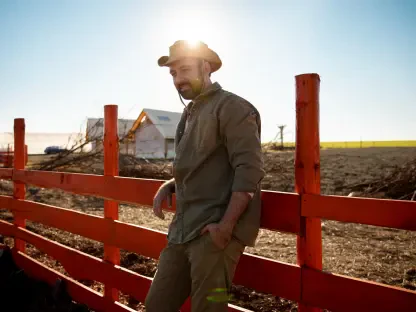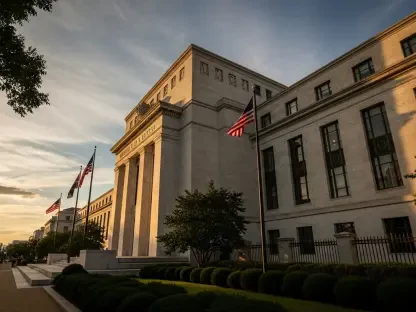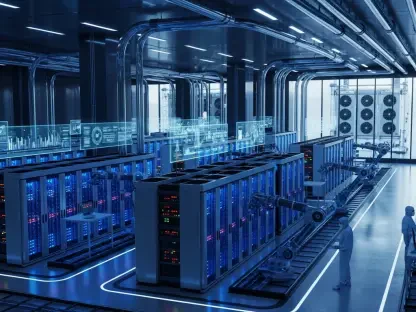In the dynamic landscape of urban development, the city of Great Falls is navigating the complexities of funding essential utility expansions amidst growing infrastructure demands. As new housing projects emerge, the city faces the daunting task of extending utility services such as water and sewer systems to these new developments. With the Meadowview Village project spotlighting these challenges, city officials are critically evaluating funding strategies, placing a spotlight on development growth mechanisms. This has spurred discussions around innovative funding models such as special improvement districts, utility rate increases, and collaborative efforts between city governance and private developers. As Great Falls explores methods to finance these crucial expansions, a broader discussion emerges on how the city’s infrastructure plans align with community expectations and goals for sustainable growth.
The Need for Infrastructure Reassessment
Addressing Growth and Development Needs
Great Falls is undergoing a transformative phase, with more housing developments proposed to meet increasing community demands. The city acknowledges the pressing necessity to rethink existing infrastructure funding models, especially as new projects like the expansive Meadowview Village surface. This growth forces city leaders to confront the inadequacies of current systems in accommodating future expansion needs. As highlighted by city officials, existing funding structures may not suffice to sustain these ambitious undertakings. City Manager Greg Doyon emphasizes the importance of proactive adjustments to ensure that utility systems can effectively support existing and future residential areas. This reevaluation of infrastructure funding is not merely about meeting current demands but also about strategically preparing the city for sustained long-term growth. Through careful planning and innovative funding solutions, Great Falls can maintain its trajectory toward a well-prepared, scalable urban framework.
Collaboration Between Developers and City Officials
As the city extends its boundaries to incorporate new housing and communities, collaboration between developers and city officials is increasingly vital. Developers are not only key stakeholders in building new housing projects but also integral partners in sharing the financial responsibility of ensuring these developments are supported by necessary infrastructure. This collaborative spirit is rooted in practicality—large-scale developments like Meadowview Village present significant challenges that demand united efforts to overcome. By aligning their objectives, developers and city officials can create a more efficient pathway for project execution, ultimately serving both the city’s growth goals and developers’ business interests. The dialogue between these parties seeks to foster an environment where public resources and private investments converge to meet the broader community’s needs effectively.
Exploring Funding Mechanisms
Considering Special Improvement Districts
Special improvement districts (SIDs) emerge as a prominent funding mechanism under consideration for Great Falls’ infrastructure projects. SIDs involve a cooperative model where financial responsibilities are shared between the city and developers. This model allows initial infrastructure costs to be covered via bond financing, which is subsequently repaid through assessments levied on future residents within the district. This structured approach brings several benefits, including the distribution of costs over time, ensuring that development initiatives gain momentum without placing an undue financial burden on a single entity. For Great Falls, adopting SIDs could align development objectives with financial viability, providing a tailored solution to the city’s unique infrastructure challenges. As the city contemplates the merits of SIDs, it’s crucial to ensure transparency and effective communication with stakeholders to streamline implementation and manage future assessments judiciously.
Evaluating Alternative Funding Sources
In addition to SIDs, other funding mechanisms are being actively explored to support infrastructure expansion. These include the implementation of impact fees and latecomer’s fees, which have been successfully utilized in other cities like Missoula. Impact fees provide a means to allocate the costs of community growth to new developments, ensuring that the financial implications of expansion are equitably managed among newcomers. Similarly, latecomer’s fees enable reimbursement to developers who initially bear utility infrastructure costs, encouraging further investment in city development. Federal grant funds stand as another viable option to consider, particularly for projects located on the city’s outskirts where infrastructure demand is acute. Policymakers must weigh the advantages and challenges of each mechanism, tailoring strategies to align with the city’s specific development and financial goals. By adopting a diverse funding portfolio, Great Falls can enhance its infrastructure projects’ sustainability while addressing both current and future urban growth.
Addressing Utility Rate Increases
Proposing Practical Rate Adjustments
In response to funding challenges, Great Falls is considering adjustments to utility rates as a strategic approach to finance infrastructure development. Two main options are under review: a moderate 10% increase and a more ambitious 27% hike. The higher rate provides a focused strategy to establish a dedicated fund supporting infrastructure projects connected to new developments. While this presents a robust financing avenue, it also invites crucial discussions about the balance between immediate financial impact on residents and long-term developmental benefits. The potential for sparking essential infrastructure projects makes these rate adjustments a compelling option for city leaders tasked with managing growth sustainably. As proposals are deliberated, community engagement becomes paramount, ensuring transparency and fostering public understanding of the initiatives aimed at cultivating broader city improvements.
Balancing Immediate Costs and Long-Term Benefits
The decision to raise utility rates involves careful consideration of how immediate financial implications on residents translate into long-term community benefits. This approach offers distinct advantages by enabling the city to address pressing infrastructure needs efficiently while preparing for anticipated developmental demands. However, proposed changes may also generate public concern regarding affordability and fairness. Addressing these issues requires transparent communication from city officials and an inclusive decision-making process that incorporates community feedback. By openly discussing potential benefits, such as improved infrastructure reliability and capacity to support new developments, city leaders can build trust and foster a shared understanding of growth-related challenges. Through strategic utility rate adjustments, Great Falls can strategically allocate resources to projects essential for the city’s sustained prosperity and development.
Engineering and Policy Challenges
Engineering Demands of City Expansion
As Great Falls continues to grow, expanding utility infrastructure presents distinct engineering challenges. New housing developments further from the city center require innovative solutions to connect with existing utility networks. Notably, the need to pump wastewater back towards centralized treatment facilities necessitates a substantial redesign of traditional infrastructure arrangements. These technical complexities require significant investment and expertise, highlighting the importance of forward-thinking planning and collaboration. Addressing these engineering demands involves not only clear financial strategies but also advanced technological solutions and efficient resource management. By investing in these areas, Great Falls aims to ensure its infrastructure remains resilient, sustainable, and capable of supporting expansive growth, positioning the city favorably for future success.
Revisiting and Updating Policies
In light of the evolving infrastructure demands, Great Falls is also reevaluating longstanding policies, such as the special improvement district (SID) policy, to better reflect contemporary development needs and opportunities. Modernizing these policies involves a comprehensive assessment of their effectiveness and adaptability in supporting current and future projects. This process includes evaluating how policy updates could incentivize greater private sector involvement while safeguarding public interests. City leaders are tasked with balancing policy flexibility to stimulate innovation with regulatory measures that protect public infrastructure integrity. This dynamic policy review underscores a commitment to creating an environment conducive to both business growth and community well-being, ensuring that policy frameworks are responsive and supportive of continuous development efforts.
Driving Forces and Broader Consensus
Aligning Funding Strategies for Development
A consensus is emerging among Great Falls city channels regarding the necessity to critically re-evaluate funding strategies. This is crucial to effectively spur and accommodate development within the community. Deliberations around mechanisms like SIDs and other funding tools indicate a shift towards models that better align with contemporary development demands and standards. Emphasis is placed on collaboration as both public bodies and private developers acknowledge mutual benefits from investment in infrastructure vital for growth. City officials and stakeholders alike recognize that traditional funding approaches need modernization to stay aligned with evolving growth needs. This shared understanding forms the basis for exploring innovative solutions to build a robust infrastructure supporting Great Falls’ long-term urban expansion.
Mutual Benefits of Collaborative Approaches
Central to Great Falls’ growth strategy is the recognition of mutual benefits derived from collaboration between the city and its developers. As stakeholders navigate challenges associated with expanding urban areas, they find common ground in shared objectives aimed at fostering a thriving community. Projects like Meadowview Village embody the potential for development to proceed seamlessly with coordinated public and private sector input. Through reinforced partnerships, both city leaders and developers strive to balance their individual goals with the broader community’s welfare. This cooperative framework offers new possibilities for integrated planning and investment that most effectively meet Great Falls’ urban development needs. By fostering an environment of collaboration, Great Falls aims for a future where growth supports all facets of the city’s expansion goals.
Future Directions for Great Falls
Embracing a Reformed Infrastructure Approach
As Great Falls continues its developmental journey, the city’s exploration of infrastructure funding alternatives signifies a turning point in its urban planning strategies. This pursuit of reformed approaches reflects an evolving understanding that growth sustainability depends on innovative thinking, collaborative efforts, and modernized funding models. The infrastructure challenges highlighted through projects like Meadowview Village underscore the critical need for adaptive frameworks capable of accommodating new housing demands while promoting resilience and reliability. Future considerations involve refining these strategies to ensure Great Falls remains positioned to meet its residential and infrastructural targets proficiently. With a comprehensive approach to infrastructure funding, Great Falls aims to facilitate a conducive environment for sustainable urban growth.
Ensuring Quality and Reliability
Beyond Special Improvement Districts (SIDs), there are a range of funding strategies being considered to boost infrastructure growth. One approach involves impact fees, which have been effectively used in cities like Missoula. These fees allocate the financial burden of community growth to new developments, ensuring costs are fairly distributed among newcomers. Additionally, latecomer’s fees serve as reimbursement for developers who initially pay for utility infrastructure, fostering further investments in city growth. Another important funding avenue is federal grants, particularly beneficial for projects at the city’s outskirts, where the demand for infrastructure is pressing. It’s crucial for policymakers to evaluate the pros and cons of each mechanism, adapting strategies to match the city’s specific developmental and economic objectives. By diversifying funding sources, Great Falls can bolster the longevity and sustainability of its infrastructure projects, addressing both ongoing and upcoming urban expansion.


